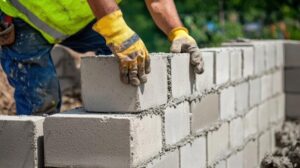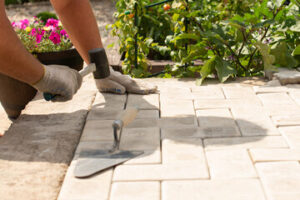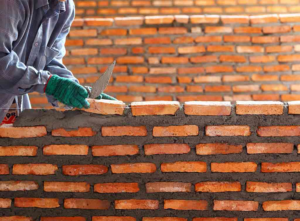Concrete Contractors McKinney TX provide critical guidance in the construction process. They help in choosing the right concrete types and materials to ensure project completion.

They are familiar with local building codes and regulations, ensuring that the concrete work complies with industry standards. This reduces the risk of expensive fines or penalties.
When a concrete project is underway, you want to be sure that the contractor is experienced enough to handle your specific project. Asking for references and access to a portfolio can help you evaluate the level of experience of a potential contractor, as well as their work quality. Asking about the equipment used on projects can also indicate whether or not they have the resources to handle your project efficiently.
Concrete professionals work with concrete every day, which gives them extensive industry expertise that allows them to plan and execute projects with precision. This experience ensures that your concrete will meet all building codes, and that it looks professional and durable. In addition, contractors with years of hands-on experience will know how to best utilize concrete for a variety of applications, including residential and commercial structures.
A professional concrete contractor can save you money in the long run by preventing costly errors that can result from a lack of knowledge or poor workmanship. In addition, they can often negotiate discounts on materials and provide a better price than you could get as an individual homeowner or business owner.
During the selection process, ask prospective contractors for a detailed project timeline and cost breakdown. This will protect you from unexpected delays and expenses, while ensuring that your project is completed on time and within budget. It’s also important to determine a contractor’s quality assurance and change management practices, as this will give you confidence in their ability to deliver high-quality results.
In addition, a good contractor will be able to provide you with a list of previous clients that you can contact for a review of their experience working with the contractor. You can even request photographs of the projects to get a sense of the craftsmanship. It’s also helpful to read public reviews on online directories such as Google, Facebook, and Angi.
Finally, when choosing a concrete contractor, ask about their worksite management strategy. This will help you understand how the contractor plans to manage your construction site, including a schedule for equipment access, protocols for material storage and disposal, accommodating other contractors, security if necessary, and cleanup after completion.
Reputation
A concrete contractor’s reputation reflects their level of professionalism and expertise. When choosing a contractor for your project, it’s important to find one with a strong local reputation that’s built on positive customer experiences and verifiable results. Reputable contractors are able to effectively communicate with clients and provide clear, detailed estimates that outline the scope of work, materials, and timelines. They’ll also be able to identify any potential challenges or obstacles that may impact the completion timeframe and offer alternative solutions to ensure your project stays on track.
When evaluating a concrete contractor’s reputation, it’s important to ask for references and to check online reviews. You can also visit completed projects to gauge the quality of workmanship and style. A reliable contractor should be able to provide you with a comprehensive portfolio of past concrete projects, as well as client testimonials and recommendations.
Make sure your chosen contractor has access to the proper tools and equipment needed for your project. This will help them achieve high-quality results while minimizing any risk of injury or damage to property or equipment. In addition, look for a contractor that prioritizes safety and follows OSHA regulations. It’s also a good idea to ask about their regular equipment maintenance plan and how they ensure the safety of their workers.
Ask your prospective concrete contractor how long they expect the project to take from start to finish. They should be able to explain the steps involved in each phase, such as demolition, forming, rebar installation, pouring, finishing, and recommended curing times. You should also discuss how they prefer to communicate during the construction process. Some contractors may provide daily check-ins, weekly email recaps, or scheduled meetings.
When selecting a concrete contractor, it’s crucial to choose one with a valid license and insurance. This will ensure that they’re qualified to carry out the work and will cover any unforeseen expenses that may occur during the project. It’s also a good idea that you speak with a few different contractors and request quotes to compare prices. A reputable contractor will be transparent about their pricing and fees, so be wary of any unusually low bids that could signal subpar materials or hidden costs.
Insurance
Concrete contractors play a critical role in construction projects. Their work is highly demanding with small margins for error and accidents happen frequently. The best way to protect yourself from the risk is to invest in the proper insurance policies for your business. General liability insurance protects you from third party claims of bodily injury or property damage, legal fees, and defense costs. This is a basic requirement for any business in the construction industry.
In addition, reputable concrete contractors offer extensive warranties on their work. These warranties demonstrate that they are confident in their ability to perform high-quality work and will address any issues that arise after the project is complete. When assessing a concrete contractor’s warranty policy, ask for examples of their work that is older than five years to gauge long term durability.
Workers’ compensation insurance is required by law in most states and provides medical expenses and wage replacement for employees injured on the job. Having this insurance not only helps to ensure your employees are taken care of, but also highlights your commitment to safety and quality.
Commercial auto insurance is another essential policy for concrete contractors. Since your employees will be using company vehicles to transport equipment and materials, commercial auto coverage is crucial for protecting you from damages and injuries that could occur during these trips.
Employee dishonesty coverage is an important policy for concrete contractors to have, as it helps to cover losses that may arise from fraudulent activities. For example, if an employee steals concrete, this type of policy can provide funds to cover the cost of replacing the material. Additional coverage options that are worth investigating include general property insurance, commercial auto, and worker’s compensation.
Portfolio
Concrete is a common construction material, but working with it requires a lot of attention to detail to get the results you want. An excellent concrete contractor will know how to pour, smooth and finish the concrete so that it looks exactly as you want it to. This skill can make a huge difference in the final product.
A good concrete contractor will also have a strong knowledge of the industry. They will be able to explain the benefits and limitations of different materials, finishes and procedures. This knowledge will allow them to advise their customers on the best options for each project. They will also be able to recommend specific tools or equipment that may help them work more efficiently and safely.
When hiring a concrete contractor, it is important to do your research before making any decisions. Find out what their area of expertise is and ask for examples of their previous work. For example, a contractor who specializes in decorative concrete for patios or sidewalks may not be the right choice for constructing a foundation for a new home. You should also check that they have experience in the type of concrete you require for your project.


